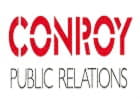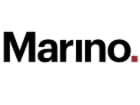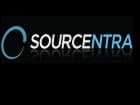Last week, Keryx Biopharmaceuticals (NASDAQ:KERX) fell a whopping 17% after missing analyst estimates for its key drug, Auryxia, which is used to control phosphorus levels in patients with chronic kidney disease who are on dialysis. However, that same day, the company reported that the FDA had approved Auryxia for use in a major new indication.
In this clip from Industry Focus: Healthcare, analyst Kristine Harjes and contributor Todd Campbell explain why the market's sell-off might be a big overreaction, why Keryx missed the mark on Auryxia sales this quarter, and the most important risks and concerns that investors need to be aware of before buying into this volatile biotech.
A full transcript follows the video.
This video was recorded on Nov. 8, 2017.
Kristine Harjes: Keryx Biopharmaceuticals. The ticker there is KERX.
Todd Campbell: What a weird story on Keryx. That's probably why we're interested in talking about it.
Harjes: Yeah. The headline here is that they got a drug approved, and they reported earnings, and the stock slides 17%. So, on the surface there, you're like, wait, they got their drug approved, that's a good thing. But if you really dig into it, it's the details of the earnings report that actually seem to have mattered, at least for this daily instantaneous reaction that the market had.
Campbell: Yeah. It was really a strange situation all around. The FDA decision on their drug, which is Auryxia, was expected on Monday. And at the same time, the company was expecting to report their earnings on Monday night. Well, 5 p.m. rolls around, and Keryx puts out a press release saying, "Hey, we haven't heard from the FDA yet, so we're not going to report earnings until we hear from them, so we'll talk to you tomorrow." Of course, that set off the Twitter-sphere, and everyone was going back and forth trying to figure out what that meant. Sure enough, first thing in the morning, they announced, yes, the FDA has approved it, and here are our third quarter numbers.
The problem was, third quarter numbers were completely disappointing, and that won the day as far as news flow. People looked right beyond the fact that the addressable patient population for Auryxia is going to get bigger, and said, "Wait a minute, why didn't the numbers hit what we thought they would hit in the third quarter for its already-approved indication?" And that's something we didn't spell out. Auryxia is already in the market for one indication in chronic kidney disease, and this new approval is supplemental approval for the drug that essentially allows its use in non-dialysis patients, where before it was being used in dialysis patients.
Harjes: Exactly. So, this is a drug that's already on the market. We've been able to follow along with the sales from this drug for a while now, since it was approved in September 2014 originally. So, now there's a new extended indication that the drug is being used for, was just approved for use in. But people are still watching carefully the sales of the original indication for this drug. And what's been really interesting is, the volume of the patients that are taking this drug was up. They reported really good year-over-year growth in patient numbers that are taking this drug.
But, essentially, revenue was kind of flat if you look at it over prior quarters, and that was, as they put it, due to a change in the mix of business, meaning the types of payers that are covering the patients that are taking this drug are not giving them as much money. Specifically, Medicare patients are making up a larger and larger percentage of this pie, and they don't pay as much for the drug. Therefore, when you do your multiplication of how much you're getting per patient times the number of patients, even though that number of patients is going up, your revenue is not going up as quickly.
Campbell: Right. The per-patient cost is a big issue. Let's back up for a second and explain the patient population that Auryxia was previously approved in. It was approved for the ability to control phosphorus levels in patients with chronic kidney disease that were on dialysis. That's about a 450,000-patient population. Managing that patient population is complex, and there are a lot of metabolic things that they have to consider, especially the impacts on iron and phosphorus. When those get out of balance, they can cause all sorts of problems and contribute to mortality. So, this helped improve the control of phosphorus in dialysis patients. A lot of people thought this drug, when it hit the market, would be a blockbuster drug. It hasn't. Sales have been very small, and really didn't start picking up until last year, when some manufacturing concerns got resolved, and as it was able to negotiate more and more coverage with different commercial insurers.
That brought us into 2017, where those negotiations continued, and they were able to cut some deals with, specifically, Part D plans run by Humana and United Healthcare, two of the biggest insurers. So, they have a lot of pricing power. As a result, when those ramped up in the third quarter, you saw, as you just described, a pickup of patients, but a drop in the average amount of revenue generated per patient. Of course, that's a big problem. Now, I think what shouldn't get lost, necessarily, in that, Kristine, is that while the revenue missed expectations by $3 million -- it came in at $15 million in the quarter -- that's still up significantly from where it was last year.
Harjes: Yeah. The other thing is, I don't think you can say these new agreements that they have with UnitedHealth and Humana are bad deals. I actually think they're fantastic new contracts for them to have inked, because now, when you look at the expanded indication, you have a bunch of patients that are going to be eligible for this. And those new patients with this new extended indication, the extended label, they're often covered in a more profit-friendly commercial way than these patients that you're seeing have less revenue per patient. So, when you start to make the reach out to the new doctors or the existing doctors saying, "Hey, same drug that you're used to, you can prescribe it to more patients," that's going to be a good thing.
Campbell: I agree with you. You have 450,000 people who are on dialysis. That's the addressable market heading into this last week when they got the approval. They just added another 650,000 addressable patients. All these patients are being treated by the same doctors. So they already have the sales team in place, up to speed, out there visiting and calling on these doctors. It's much easier than it would be for, say, a brand-new company getting a brand-new approval, to then go and say, "Hey, guess what? You can use this in your non-dialysis patients as well as a way to boost iron," which is a big problem in the progression of the disease, is less iron and anemia. So, the ability to address that with an oral tablet, without having to go to IV infusions for iron, or having to take vitamin supplements that sometimes can cause problems for people's GI system, there are some advantages that may allow this drug to generate sales. Who knows what those sales would be?
We've got, like you said, a bigger proportion of non-dialysis patients covered by commercial insurers. Theoretically, they'll pay more than the Part D plans will for the drug. It's a larger patient population, but maybe they don't get as much penetration into it. It's hard to say, and I think that's why people are really concerned about what the future holds for Keryx, because Keryx, by its own admission, they removed their guidance for 2017, saying, "We don't fully understand how the Part D situation is going to play out with our existing patient base for the rest of the year, and we don't know what kind of an impact this new approval in the patient mix will have from that." So, they actually pulled their guidance from 2017, and I think that scared a lot of people. Now they're looking at it and saying, "We're growing year over year, but we don't really have any insight or clarity into what that growth might look like."
Harjes: Yeah, absolutely. And uncertainty is definitely another contributing factor to the loss that the stock suffered. Also, I want to point out that this is a stock that quite a few people are extremely bearish on. About a quarter of their float, of their shares outstanding, is sold short, meaning people are betting that this company is going to fail. I think a big reason for that, besides what we already covered with the uncertainty, is that they really need sales to pick up to avoid somewhat of a cash crunch.
Campbell: Yeah. They have $114 million in cash, which is not a ton of money when you have a commercial stage drug. It's expensive, marketing these drugs. As a result, you did $15 million in revenue in the third quarter, that was up from $5.8 million year over year, but it was relatively flat quarter over quarter. That's the problem, quarter over quarter was flat. A $24 million loss reported in the third quarter. So, $114 million in cash, $24 million loss, that's got to make you say, at one point are they going to have to tap investors for more money? They do have an at-the-market facility, they can go out and raise cash by selling stock at whatever price the market is trading at. Obviously, they don't want to do it at $5. They were probably hoping it was going to go up, and they could tap it that way. But, they can access $75 million from the at-the-market. So, I don't think the cash crunch is immediate. I think people could see dilution over the course of the next couple of quarters if the non-dialysis business doesn't ramp relatively quickly.
And then, of course, on the whole uncertainty issue, you do have competitors in the space that are also working on their own anemia drugs. One of them, the symbol there is AKBA, Akebia. Easy for me to say. They have trial results panning out in 2018-2019, and potential commercialization some time in 2019-2020. So, I think that's weighing on a little bit of investor enthusiasm, too. So, this is a high-risk stock. The investor takeaway is, sales are still growing year over year, a doubling of the addressable patient population. It could be that the stock is underpriced, but it's certainly not a stock to buy for the faint of heart.
Harjes: Yeah. It's not surprising that there are competitors researching into this industry, if you think about the fact that one in seven adults has chronic kidney disease. There's a lot of patients that we're talking about here, and there are a lot of complications with the disease. Of course you're going to have interested drugmakers trying to develop new and better cures for these people.














